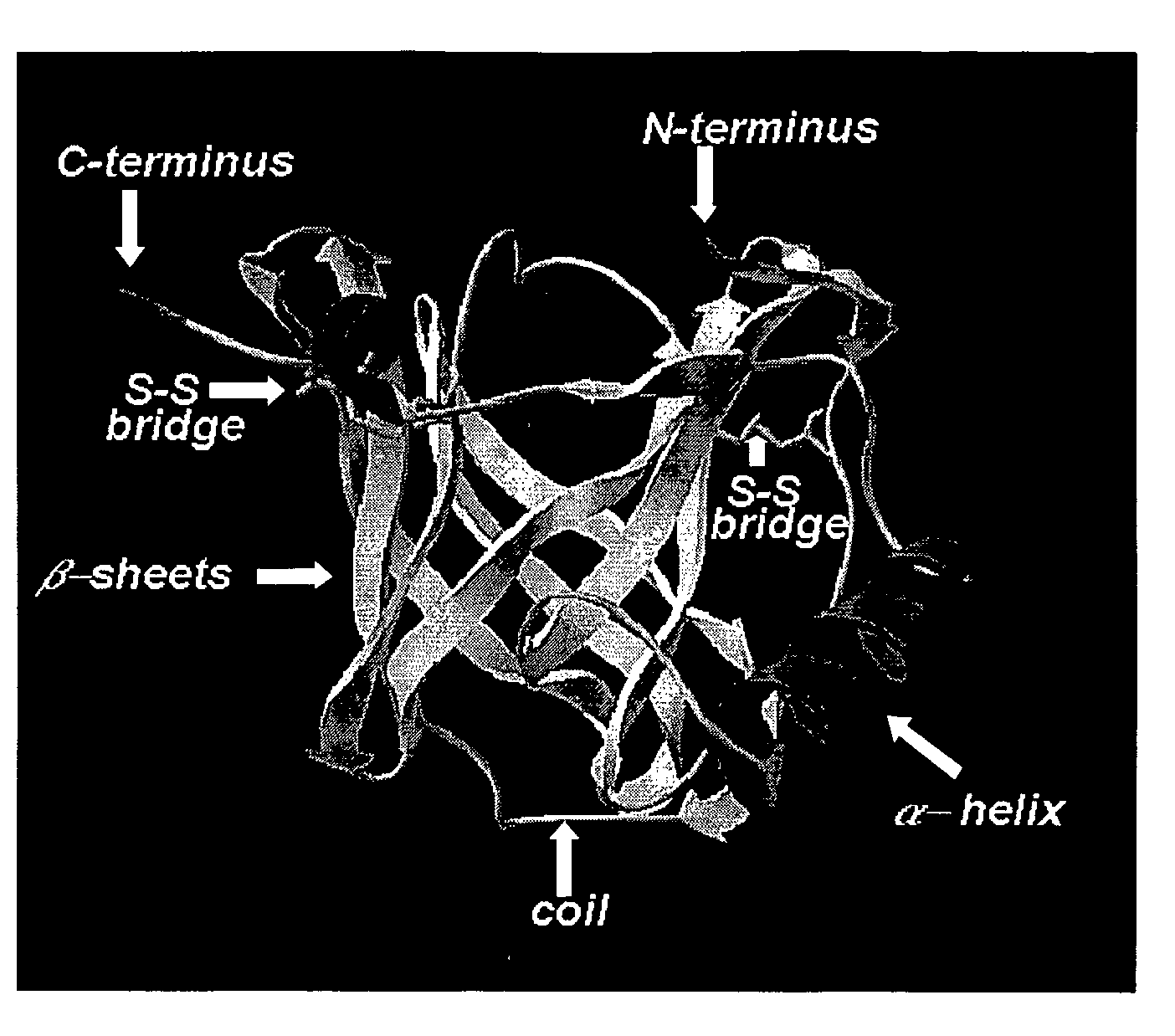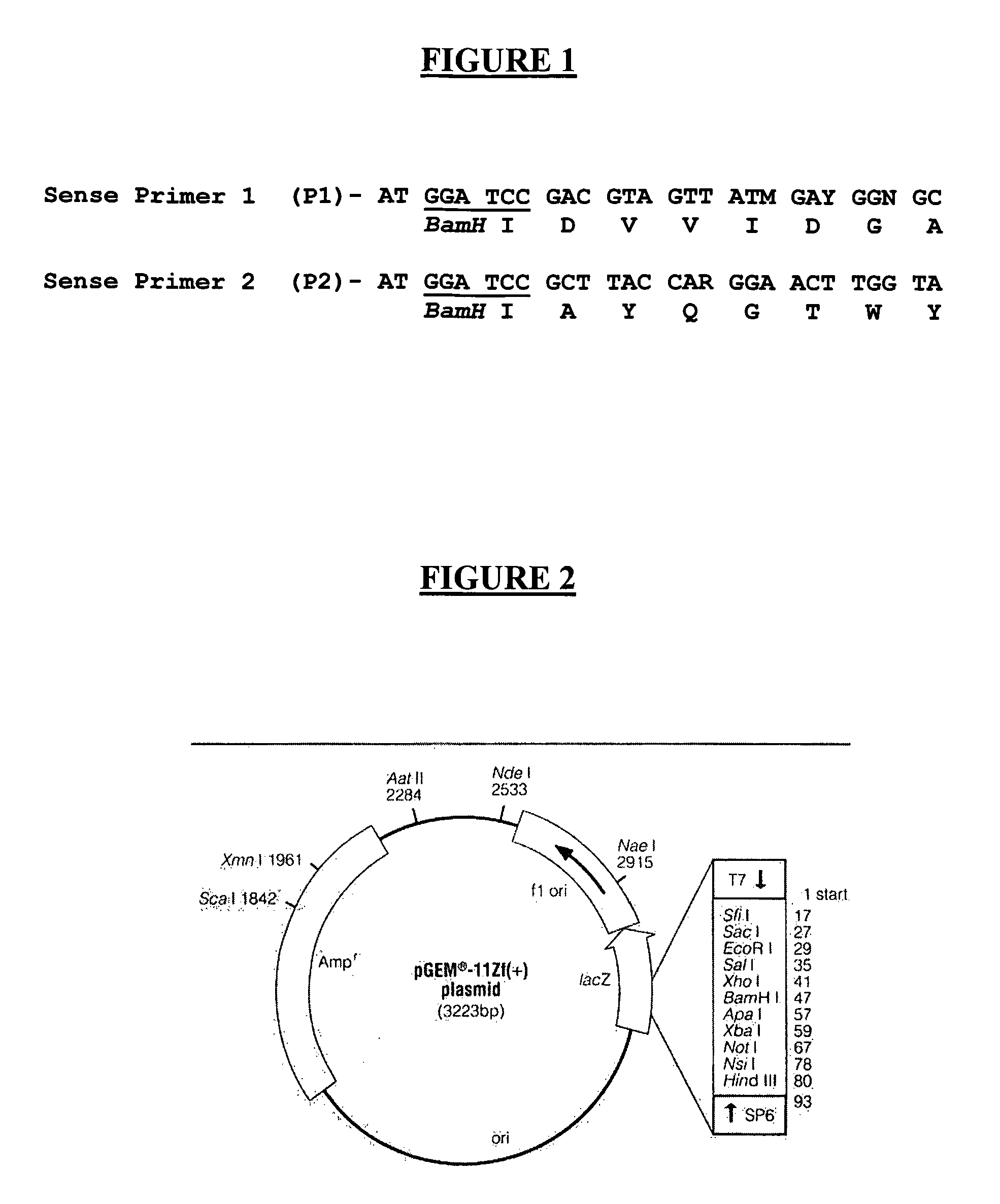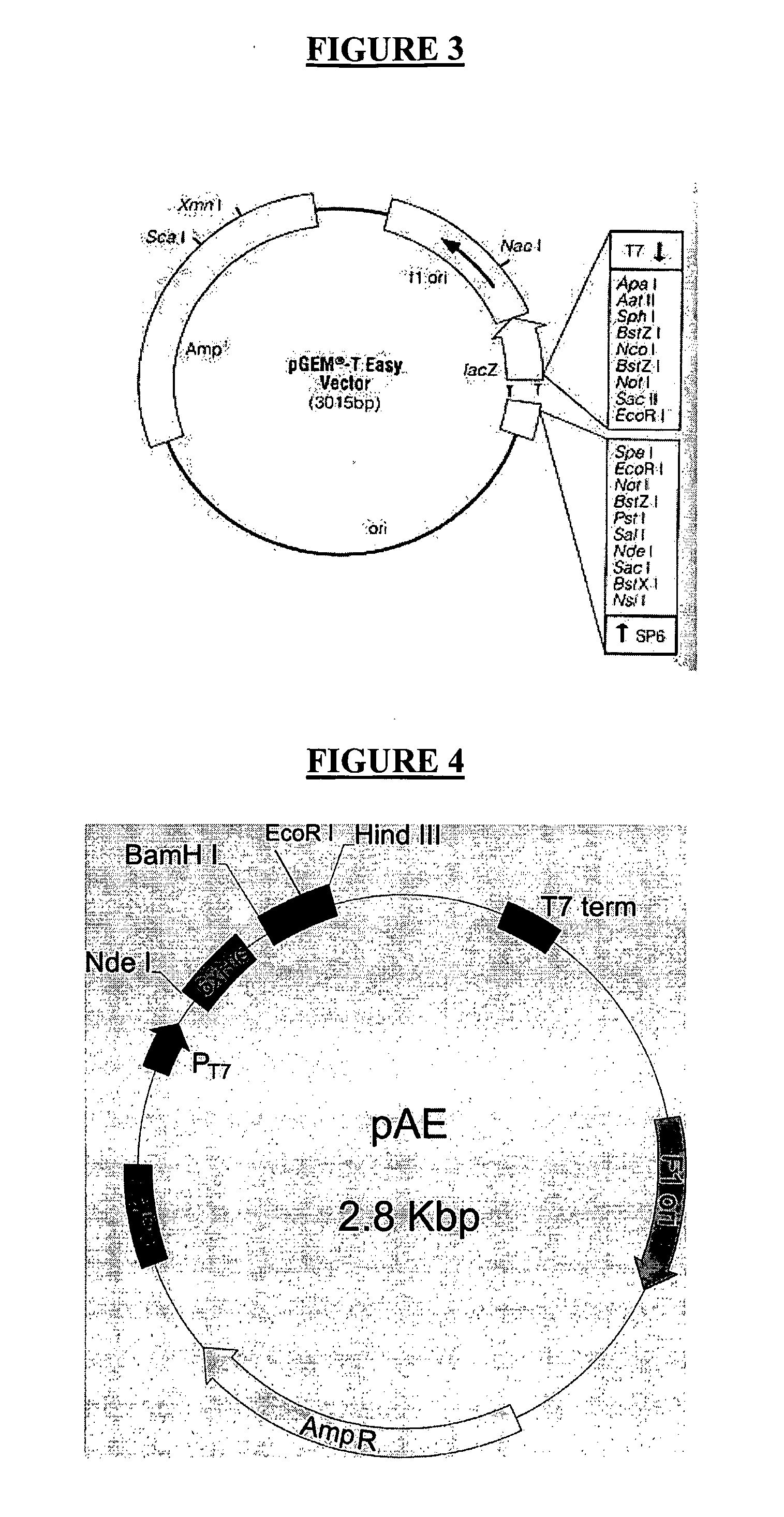Process for Obtaining Recombinant Prothrombin Activating Protease (Rlopap) in Monomeric form; the Recombinant Prothrombin Activating Protease (Rlopap) as Well as its Amino Acid Sequence; the Use of this Protease as a Defibrinogenase
a protease and recombinant prothrombin technology, applied in the field of recombinant prothrombin activating protease (rlopap), can solve the problem of not being able to visualize a serine protease si
- Summary
- Abstract
- Description
- Claims
- Application Information
AI Technical Summary
Benefits of technology
Problems solved by technology
Method used
Image
Examples
example 2
Constructing a Library of cDNA in Plasmids
[0084]Screening in agarose gel, the plasmid library presented a title of 105 plasmids / μg. Two libraries were constructed in plasmid: one with inserts between 400 and 800 pb (BA) and the other with inserts larger than 800 pb (BB).
[0085]From each library 300 clones were randomly selected, that after digestion with EcoR I and Hind III presented a variety of inserts of different sizes. Some of these inserts were digested by the restriction enzymes, producing two fragments in agarose gel (FIG. 6). 300 clones randomly selected in the cDNA BA and BB libraries were sequenced and presented significant identity with the proteins available in the “GenBank”.
example 3
Amplification of the Lopap Codifying cDNA
[0086]The product amplifying with the oligonucleotides P1 and SP6 of the BA library (400 to 800 pb) showed a band of approximately 600 pb and another of around 800 pb, while the BB library (larger than 800 pb) showed a band of around 800 pb (FIG. 7). The 600 pb band (named C1) and the 800 pb band (named C2) were cut out of the gel and purified. The purified cDNA was subcloned preferably in “easy” pGEM-T and the DH5α competent bacteria were transformed and placed in plates.
example 4
Screening the Recombinant Plasmids
[0087]40 clones were collected (example 3), 20 referred to the C1 band (named from C1-1 to C1-20) and the other 20 clones referred to the C2 band (from C2-1 to C2-20), and submitted to the screening process concerning the size of the insert, before the plasmidial DNA purifying through the mini-preps. As demonstrated in FIG. 8, the plasmids presenting large inserts were purified and submitted to the PCR essays using the primer P2.
PUM
| Property | Measurement | Unit |
|---|---|---|
| molecular weight | aaaaa | aaaaa |
| wave lengths | aaaaa | aaaaa |
| wave lengths | aaaaa | aaaaa |
Abstract
Description
Claims
Application Information
 Login to View More
Login to View More - R&D
- Intellectual Property
- Life Sciences
- Materials
- Tech Scout
- Unparalleled Data Quality
- Higher Quality Content
- 60% Fewer Hallucinations
Browse by: Latest US Patents, China's latest patents, Technical Efficacy Thesaurus, Application Domain, Technology Topic, Popular Technical Reports.
© 2025 PatSnap. All rights reserved.Legal|Privacy policy|Modern Slavery Act Transparency Statement|Sitemap|About US| Contact US: help@patsnap.com



